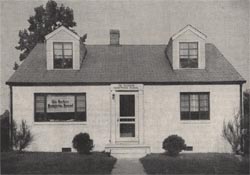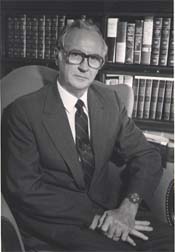Saturated with Scripture
Just last year, on October 20, 2014, a Civil War monument to Confederate General Stephen Dodson Ramseur was rededicated near Belle Grove National Historic Park in Virginia on the Cedar Creek Battlefield. It was the anniversary of his death on that battlefield in 1864. He was a solid believer in Christ as Lord and Savior. He was also a solid Christian Presbyterian.
Ramseur was born on May 31, 1837 in Lincolnton, North Carolina, the second son of nine children born to Jacob and Mary Ramseur. Jacob was a merchant. His wife was a staunch Presbyterian and taught the children, including Stephen, that same conviction in his young years.
Stephen, or as he later on was called Dodson, or Dod, went to schools in this area and eventually on to Davidson College, a Presbyterian School. It was there that he fell under the influence of the Professor of Mathematics, Danial Hervey Hill. The latter encouraged Dod to attend the United States Military College at West Point, so after a period of only two years at Davidson, he did. He was to remain there for five years, eventually graduating fourteenth out of a class of forty-one students.
Ramsuer lived his Christian convictions at West Point, reading his Bible daily, attending worship services, and living a moral life. At the same time, his political views were becoming more and more Southern in their convictions. At one time, he observed that Southern students were superior to northern students in every way! (No amen permitted by our Southern subscribers!) He graduated in 1860, commissioned a Second Lieutenant in the Third U.S. Artillery, only to resign from it and join the newly-formed Confederate States of America when his state of North Carolina seceded from the United States. Before long, he was promoted to Colonel of the Third North Carolina Infantry Regiment. Eventually he was commissioned a Major General, the youngest general officer in the Confederacy. He fought in many battles from the Seven Days Battles in 1861 to the Battle of Cedar Creek in 1864. On October 28, 1863, he married his first cousin, Ellen Richmond, or “Nellie,” who like himself was of Presbyterian conviction, which union produced a daughter, though he never saw her. A year later, on this day, October 20, 1864, he would die of battle wounds at Cedar Creek.
His biblical faith remained a steadfast conviction throughout his life. No letters left his pen without those Scriptural convictions and prayers imbedded in them. Some of them follow:
“Sometimes I am so oppressed with my sinfulness, that I cannot be but sad.”
“Let us rejoice rather and be exceedingly glad that our Redeemer lives and reigns continually, making intercession for us at the throne in heaven.”
“May we be soon live together a Christian life, loving and obedient children of our merciful God.”
“May He who turns pride to shame, vain glory to emptiness, who is powerful to raise up and to destroy, may that God be our strength and shield, our mighty Protector and our deliverer.”
Words to Live By:
Dodson Ramseur’s life was saturated with Scripture. How as a Christian he could have held those political convictions and all that went with it, we may never comprehend, but that he both lived and died a Christian Presbyterian, with a firm hope in Christ, is nonetheless certain. Dear reader, does the Word of God so saturate your life that your neighbors, when they hear you converse and when they witness your behavior, there is no doubt as to Whom you belong?

![James Alexander Bryan [20 March 1863 - 28 January 1941]](https://thisday.pcahistory.org/wp-content/uploads/2013/03/bryanJamesA.jpg)

